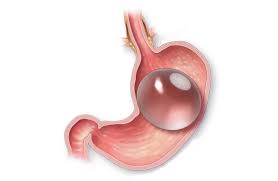In the ever-evolving world of weight management, the quest for effective and minimally invasive solutions has led many to explore innovative procedures. One such advancement is Endoscopic Intragastric techniques. This approach offers a promising option for those seeking to manage their weight effectively. In this comprehensive guide, we'll explore what Endoscopic Intragastric techniques are, how they work, their benefits, and what you should consider before undergoing the procedure.
What is Endoscopic Intragastric?
Endoscopic Intragastric techniques involve the use of an endoscope—a flexible tube equipped with a camera and instruments—to access the stomach through the mouth. This minimally invasive method is used to perform various procedures aimed at aiding weight loss or managing obesity. Unlike traditional surgical methods, Endoscopic Intragastric procedures do not require large incisions, which often means a quicker recovery and fewer complications.

The Procedure
The Endoscopic Intragastric procedure is typically performed under sedation. A thin, flexible tube is inserted through the mouth and guided down the esophagus into the stomach. The endoscope allows the physician to view the stomach's interior and perform necessary modifications or treatments. These procedures can include placing an intragastric balloon, stitching the stomach to reduce its size, or other techniques designed to limit food intake and enhance satiety.
Types of Endoscopic Intragastric Procedures
There are several variations of Endoscopic Intragastric procedures, each tailored to specific needs and goals:
- Intragastric Balloon: A balloon is inserted into the stomach and inflated to occupy space, which helps to reduce food intake and promote a feeling of fullness.
- Gastric Plication: This technique involves folding the stomach walls to reduce its size, thereby limiting food intake.
- Gastric Sleeve Endoscopy: This involves the endoscopic placement of a sleeve or similar device to reduce stomach capacity.
Benefits of Endoscopic Intragastric Techniques
The benefits of Endoscopic Intragastric techniques are substantial and can make a significant difference in your weight management journey. Here are some key advantages:
Minimally Invasive
One of the primary benefits of Endoscopic Intragastric procedures is their minimally invasive nature. These techniques typically involve no large incisions, which reduces the risk of infection and promotes a faster recovery compared to traditional surgical methods.
Shorter Recovery Time
Patients undergoing Endoscopic Intragastric procedures often experience a shorter recovery time. Many individuals can resume normal activities within a few days, as opposed to weeks or months required for recovery from conventional surgery.
Effective Weight Loss
Endoscopic Intragastric procedures have been shown to be effective in helping individuals achieve significant weight loss. By reducing the stomach's capacity or altering its function, these techniques can lead to reduced food intake and increased satiety.
Reduced Risk of Complications
The minimally invasive nature of Endoscopic Intragastric techniques often translates to a lower risk of complications compared to more invasive surgical options. This includes a lower likelihood of infection, bleeding, and other post-operative issues.
Considerations Before Undergoing Endoscopic Intragastric Procedures
While Endoscopic Intragastric techniques offer numerous benefits, it is essential to consider several factors before deciding to undergo the procedure:
Eligibility and Suitability
Not everyone is a candidate for Endoscopic Intragastric procedures. Factors such as your overall health, weight, and previous medical history will play a role in determining if this approach is suitable for you. A thorough evaluation by a healthcare professional is necessary to ensure the procedure aligns with your health goals.
Lifestyle Changes
While Endoscopic Intragastric techniques can aid in weight loss, they are not a standalone solution. Success often requires a commitment to lifestyle changes, including a balanced diet and regular exercise. The procedure is most effective when combined with a comprehensive weight management plan.
Long-Term Outcomes
The long-term effectiveness of Endoscopic Intragastric techniques can vary. Some individuals may achieve sustained weight loss, while others may experience a gradual return to pre-procedure weight. Regular follow-ups and adherence to recommended lifestyle changes are essential for maintaining long-term success.
Preparing for an Endoscopic Intragastric Procedure
Preparation for Endoscopic Intragastric techniques involves several steps to ensure a smooth process and optimal outcomes:
Pre-Procedure Assessment
Before undergoing an Endoscopic Intragastric procedure, you will likely undergo a thorough assessment to evaluate your overall health and suitability for the procedure. This may include medical history reviews, physical exams, and imaging studies.
Dietary and Lifestyle Adjustments
In the weeks leading up to the procedure, you may be advised to make specific dietary and lifestyle adjustments. This can include adopting a healthier eating plan and increasing physical activity to prepare your body for the procedure and enhance its effectiveness.
Understanding Post-Procedure Care
Post-procedure care is crucial for a successful recovery. You will receive instructions on managing any discomfort, adhering to dietary restrictions, and following up with your healthcare provider. It is essential to follow these guidelines to ensure optimal results.
The Future of Endoscopic Intragastric Techniques
As technology continues to advance, the field of Endoscopic Intragastric procedures is likely to see further innovations and improvements. Ongoing research and development aim to enhance the effectiveness, safety, and accessibility of these techniques.
Innovations and Advancements
Future advancements in Endoscopic Intragastric techniques may include more refined procedures, improved equipment, and enhanced patient outcomes. These developments will continue to shape the future of weight management and provide even more effective solutions.
Broader Accessibility
As Endoscopic Intragastric techniques become more widely recognized and established, their accessibility is expected to increase. This will allow more individuals to benefit from these innovative weight management solutions.
Conclusion
Endoscopic Intragastric techniques offer a promising and minimally invasive approach to weight management. With their numerous benefits, including reduced recovery time and effective weight loss, these procedures provide a valuable option for those seeking to transform their health. However, it is essential to carefully consider the procedure's suitability, potential risks, and the need for ongoing lifestyle changes. By staying informed and working closely with healthcare professionals, you can make the most of what Endoscopic Intragastric techniques have to offer and embark on a successful weight management journey.

